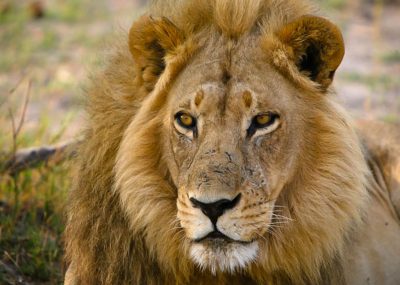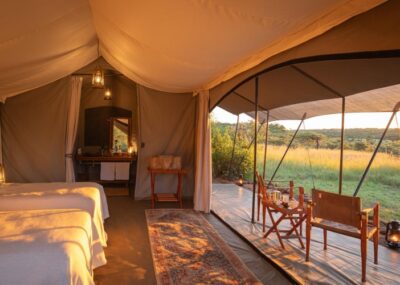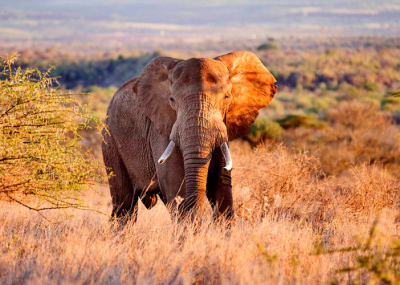Wildebeest Migration
The migration is linked to the amount the rainfall and is fairly predictable as the Wildebeest are looking for fresh water and grazing opportunities. The migration happens year around – it will depend on where you look!
The migration covers over 3,000 kilometres on the stage of the Serengeti and Masai Mara plains. It is a constant movement of 2.5 million animals. The migratory herds: 1.7 million wildebeest, the remainder being zebra, Thomson’s Gazelle and eland. The predators: As the herds travel they are pursued by the Big Cats – lion, leopard and cheetah who are in the main territorial. They also fall prey to hunting dog, hyena and jackal as well as crocodile lurking in the rivers. The Residents: Elephant, giraffe, black and white rhino, topi, impala, buffalo, Grant’s gazelle, buffalo, warthog, waterbuck, hippo, hartebeest and roan antelope can be found all year across the parks. Below is an approximate guide only.
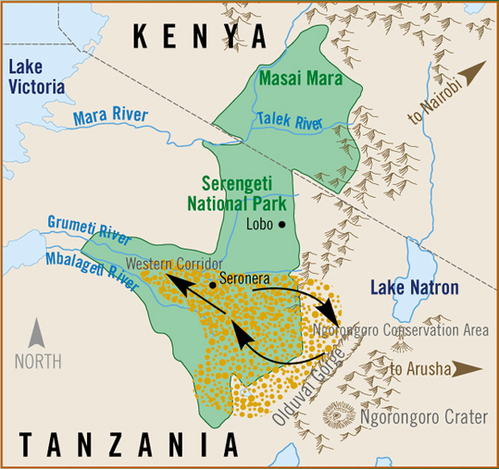
Great Migration March till May
The herds spread out as the rains fall, then can be seen massing with their young. By Apr they are shifting slowly north into the central Serengeti. May finds them moving in columns into the Western Corridor whose grasslands are maintained by the flood waters of the Mbalageti and Grumeti Rivers.
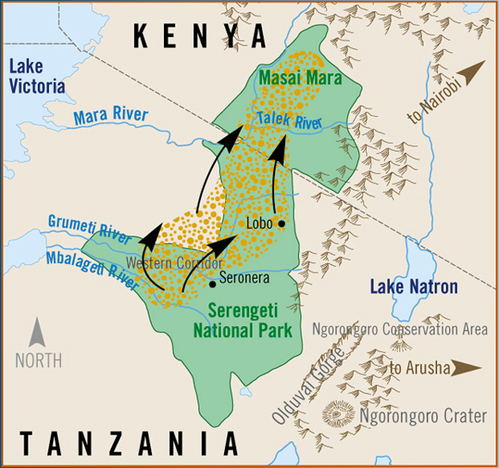
Great Migration June to August
The cool, dry months. The herds mass on the western wooded grasslands. The famous rut usually occurs in the Seronera area, then crossing the Grumeti, two flanks can appear rapidly moving west and out of the park, with the other flank heading north towards Lobo, reaching the Mara usually by Aug. The river crossings in the Mara offer dramatic moments as animals perish in swollen flood waters and the jaws of crocodiles.

Great Migration September to October
The nomadic herds are found on the well watered expanse of open and bushed grasslands of the Mara as these are usually the driest months in the Serengeti. The short rains are not far away.
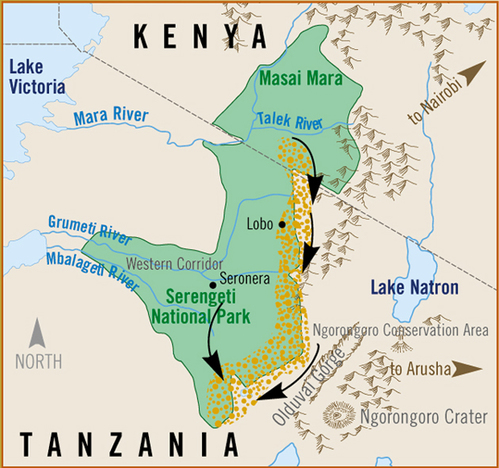
Great Migration November to February
The herds head south feeling the rains coming, moving into the eastern woodlands of the Serengeti and Ngorongoro Conservation area. By Jan they settle on the short grass plains of the southern Serengeti, Dec to Jan being the peak for the birth of zebra foals and late Jan to Feb of wildebeest calves. The predators are close by. Calves are usually on their feet within 3 minutes but the young are very vulnerable.

